KOGAS
Liquefaction Plant
Development of New High-efficiency Natural Gas Liquefaction Process
KOGAS has identified liquefaction plants―the middle stage of the natural gas value chain―as a future strategic core business. Since 2008, KOGAS has focused on researching liquefaction, which is technologically the key, and this led to the creation of a new liquefaction process called Korean Single Mixed Refrigerant (KSMR). We are proud of this independently-developed KSMR liquefaction process because it is simple, easy to operate, and competitive in terms of production efficiency compared with existing commercial processes developed overseas.
-
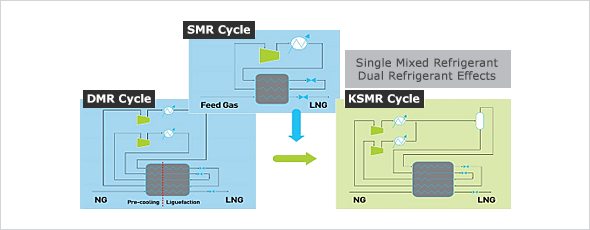
Basic overview of KSMR development
-
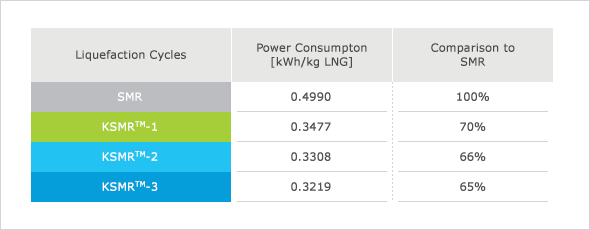
KSMR performance compared with existing natural gas process
Liquefaction Plant Test Bed
By applying the KSMR, we built a demonstration plant with a
daily production capacity of 100 tons at Incheon LNG Terminal in 2011.
Train-1, which applied the existing commercialized process, was built in 2013,
and successfully completed performance tests in 2014. We have successfully completed performance tests for Train-2, KSMR, in 2020.
Since the KSMR process performance is verified through empirical
tests of Train-2, we are confident that there will be an opportunity to use our
own technology to enter the liquefaction business currently monopolized by
prominent overseas companies.

Liquefaction plant test bed
Development of Liquefaction Plant FEED
KOGAS has developed Front-End Engineering Design (FEED)
technology for an onshore liquefaction plant with an annual capacity of 5
million tons by carrying out an industry-university-research joint project in an
LNG plant project group.
In addition to the KSMR liquefaction process, we
have
succeeded in developing design technologies in various other fields necessary
for liquefaction plant construction such as pretreatment processes and
utilities, contributing to advancing foundation design technology which has
previously been weak in Korea.
In 2016, we completed development of FEED
technology for Floating LNG (FLNG), in which LNG is produced in offshore as well
as onshore liquefaction plants. The main R&D goal here was to develop process
technology to safely and efficiently produce LNG in the harsh marine environment
and in the limited space of a hull topside. As a result of our R&D efforts, we
recently completed the successful joint development of an FLNG (or LNG-FPSO)
FEED with an annual capacity of 2.5 million tons.
Since Korea has many strengths in shipbuilding and engineering,
it is expected that the fruits of the steady R&D of industry-university-research
over the past several years will appear soon.
Liquefaction plants are a
promising business field that can bring a lot of profit not only to our
corporation, but also to related equipment manufacturers and engineering
companies. For example, an onshore liquefaction plant construction is a massive
project that costs several trillion won per project, and it is a blue ocean
project that can generate tens of billions of won in basic design costs and 100
billion won in detailed design costs.
Our Gas Research Institute has therefore
been intensively and steadily promoting R&D and commercialization efforts for
liquefaction plant technology development. We will strive to contribute not only
to energy independence, but also to fostering national-related industries, and
to generating profits.
-
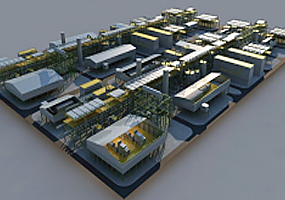
Liquefaction process of 5 million ton liquefaction plant
-
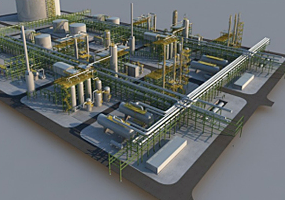
Pretreatment process of 5 million ton liquefaction plant
-
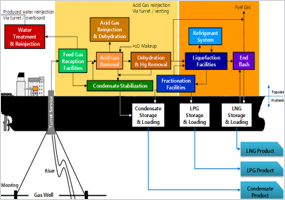
Schematic diagram of FLNG topside process
-
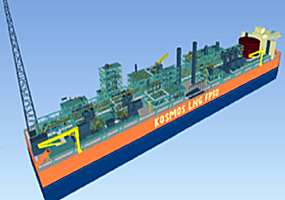
KSMR-applied FLNG ship model


